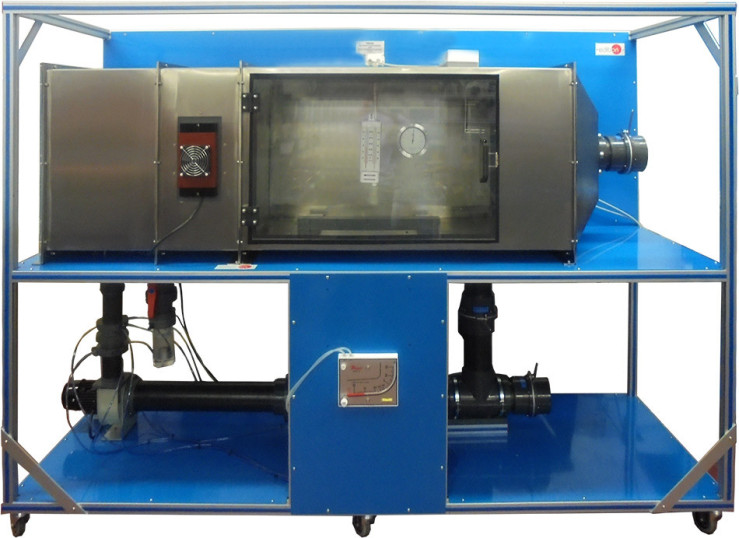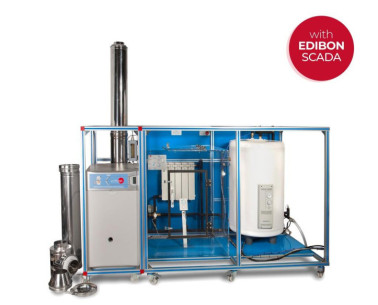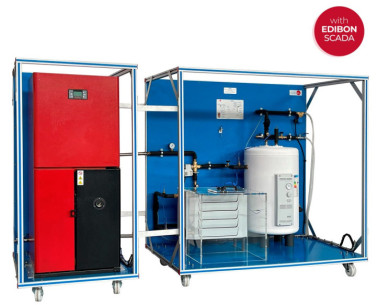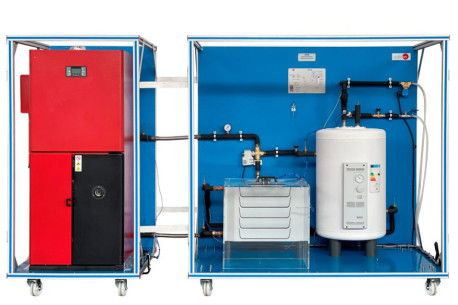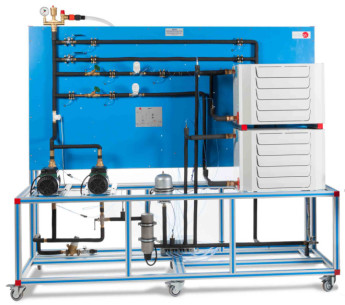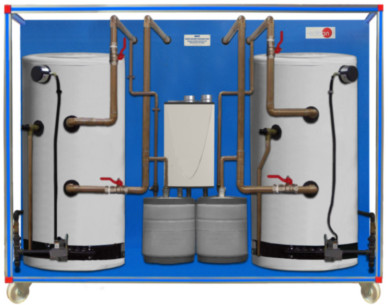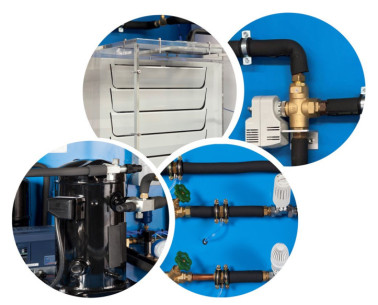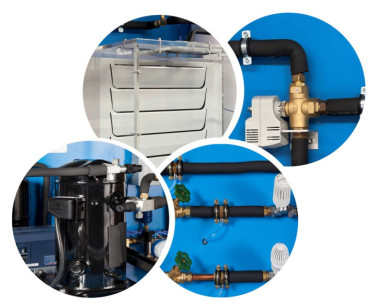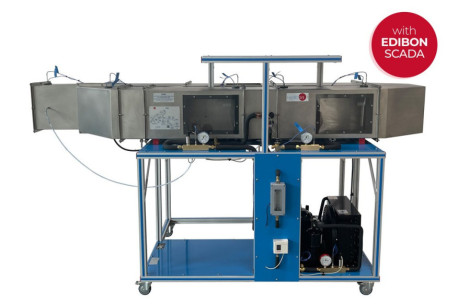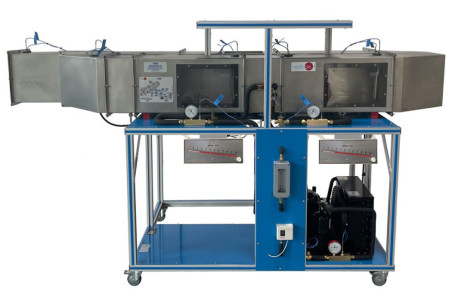TMHA Gerät zur Messung der Luftfeuchtigkeit
INNOVATIVE SYSTEME
The Air Humidity Measurement Unit, "TMHA", enables the differences in accuracy between different instruments to measure the air relative humidity.
Erweiterungen
Laboratorien
ÄHNLICHE NEUIGKEITEN
ALLGEMEINE BESCHREIBUNG
The Air Humidity Measurement Unit, "TMHA", enables the differences in accuracy between different instruments to measure the air relative humidity. It also includes a fan to show the effects of airflow on the different instruments.
A mobile metallic frame holds a duct and a fan. The main part is the stainless steel duct, which contains a selection of instruments to measure the air humidity and temperature. A transparent window in the duct allows the access for students to take readings. Instruments are changed through that window too. This duct can be humidified and dehumidified. An ultrasonic atomizer is used for humidification and a Peltier cooling element is used for dehumidification.
A variable flow rate fan mounted underneath the duct supplies an airflow. This allows to show the effects of an airflow on different instruments and to ensure a good mixing. Using several regulation valves, the unit can work in two different configurations: the air can be recycled inside the duct or taken from the room air. The airflow rate is controlled with those valves too.
The airflow can be varied with the electronic console and the flow rate is calculated with the pressure drop produced on the orifice plate located at the fan outlet. That pressure drop is measured with an inclined manometer.
The unit includes several mechanical and electronic instruments to measure relative humidity and temperature: a hair hygrometer, a humidity sensor with synthetic fiber and temperature sensor, one capacitive humidity sensor, and a wet and dry bulb hygrometer.
ÜBUNGEN UND GEFÜHRTE PRAKTIKEN
GEFÜHRTE PRAKTISCHE ÜBUNGEN IM HANDBUCH ENTHALTEN
- Study of different measuring methods for air humidity: hair hygrometer, humidity sensor with synthetic fiber, capacitive humidity sensor and wet and dry bulb hygrometer.
- Calculation of the flow with the orifice plate.
- Study of the state of the air humidity sensor in the h-x diagram (psychometric chart).
- Determination of the room air humidity using different types of instruments.
- Determination of the air humidity using different types of instruments and varying the humidity of the air with a humidifier and a dehumidifier.
- Comparison of different measuring methods for accuracy and ease of use.
- Study of the effect of the fan flow rate in the humidity measurement of the air room.
- Study of the effect of the fan flow rate in the humidity measurement of the air and varying the humidity of the air with a humidifier and a dehumidifier.
ERGÄNZENDE AUSRÜSTUNG
Gerät für den Biomasseprozess, computergesteuert (PC)
Gerät für den Biomasseprozess
Gerät zur Untersuchung der Effizienz eines Heizsystems, computergesteuert (PC)
Trainingsgerät für Warmwasserbereiter
Wärmepumpe für verschiedene Quellen und Wärmetauscher
Fußbodenheizung und/oder Wärmequelle für Wärmepumpe
Luftheizung und/oder Luftwärmetauscher
Gerät für eine Labor-Klimaanlage, computergesteuert (PC)
Gerät für eine Labor-Klimaanlage
Gerät für die Umluft-Klimatisierung, computergesteuert (PC)
Gerät für die Umluft-Klimatisierung
QUALITÄT

KUNDENDIENST

 Cookie-Präferenzen
Cookie-Präferenzen

